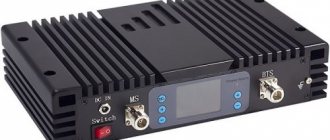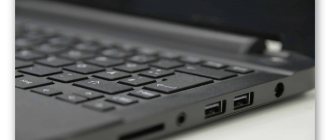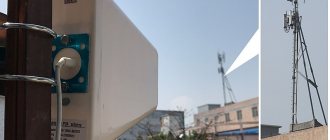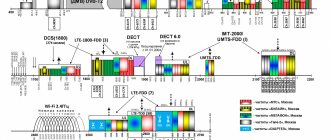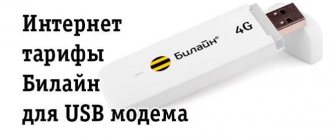Beeline offers coverage throughout Russia. High network performance and a large number of operator base stations provide stable communication, but natural barriers in the form of mountains, forests, lowlands or urban areas will not always allow you to enjoy stable communication.
Problems with the mobile network or low Internet connection speed indicate poor signal or interference. Signal amplifiers for Beeline can solve problems by providing comfortable phone operation.
When do you need a communication amplifier for Beeline?
If classic problems are detected, you should think about purchasing equipment:
- stable interruptions in the Internet;
- changing connection speed;
- interference during communication;
- no incoming calls, although the network is normal;
- constant interruptions in conversations.
Traditionally, the installation of amplifiers is necessary in distant areas - dachas, country houses, cottages or wooded areas. Often the antenna for Beeline is used in the city center. The presence of buildings or dense concrete structures can cause a poor signal.
Selected recommendations
There are a number of recommendations that need to be taken into account when selecting an amplifier:
- Frequencies. Beeline provides mobile communications and Internet services on all possible 3G and 4G frequencies in Russia, but only a few bands operate in a certain area. For example, outside the city, the fourth generation network operates only on LTE 800 and 1800. LTE2600 operates only in cities.
- Mounting height. The higher the equipment's antenna is mounted, the better it will work. In this case, it is important to direct it towards the tower.
- When purchasing outdoor routers, you cannot choose equipment based only on the strength of the transmitted signal. The speed of access to the network does not depend on it, but on the amount of interference. The lower the signal to noise ratio, the higher it is.
Network amplifiers have many advantages. They allow subscribers living outside the city to use high-quality and stable communications and the Internet. Amplifiers have one drawback - high cost, but in certain circumstances this becomes less important.
What to look for when choosing a cellular booster?
Stay up to date! You should pay attention to the following parameters:
- Frequency. The most popular base tower bands are 900 MHz and 1800 MHz. In terms of range, the tower with the first indicator wins, but the second can serve more subscribers. Therefore, according to established practice, it is optimal to use 900 MHz stations in rural areas, and 1800 MHz towers in urban villages and cities. In the country - 900 MHz, in the apartment - 1800 MHz. Don't get confused!
- Gain. Here you need to take into account the operating features of your mobile phone. It is not recommended to buy a device with a coefficient of 65 dB or lower: the connection quality will be frankly weak. Does your mobile phone work well outside, but worse at home? Buy a product with a reading of 70-75 dB.
- Output power. A power of 100 mW covers about 200 square meters. - start from this.
- Antenna. On the outside, the material is especially important, because this device must withstand both wind and precipitation. The best material is aluminum, coated on top with a special protective paint. For internal antennas, appearance is not so important: they are usually hidden under finishing materials. If there are several antennas, you will get a more stable signal. But in this case, you will also need power dividers (they distribute the signal evenly between rooms and provide better coverage).
Important! 4G repeaters are not dangerous to human health, on the contrary: they reduce radiation. And the consent of any services is not required.
Strengthening 3G/4G Internet using an antenna, modem and Wi-Fi router
The system consists of two nodes: an antenna on the street and a modem + Wi-Fi router indoors.
External antenna for 3G/4G modem/router
4G modem connected with adapters to an outdoor antenna and inserted into a Wi-Fi router
How it works? The antenna is directed towards the proposed base station of the cellular operator. Then the signal goes to a 4G modem with a router, which distributes the Internet by spreading the Wi-Fi signal. This option is popular among private installers of country Internet. Cheap and works!
Wi-Fi router with built-in 3G/4G modem
If you take the modem and router separately, then the cable coming from the street antenna gets to the modem through adapters with a thin cable and very small TS-9 or CRC-9 microwave connectors. Firstly, this is a fairly noticeable loss in the level and quality of the signal, and secondly, it is not mechanically reliable. For example, by wiping dust, you can easily damage the connector on the modem, and, as a result, you will have to buy a new device.
The solution is simple - just initially buy a router with a built-in 4G modem. For example, several models of Huawei routers are sold on our market. No advertising: they work perfectly and their connector is more reliable - SMA.
Huawei router with built-in 4G modem
Why do private technicians offer a modem and router separately? The answer is simple: the price margin is higher.
What is a MIMO antenna and why is it needed?
MIMO antenna for 3G/4G Internet
MIMO antenna is a device that has two parallel coaxial cables going to the modem/router. From practice, this means that the increase in Internet speed for reception will be from 0 to 20%, and for output – 50-100%. Necessary for those who use video communication or remote video surveillance, i.e. actively uses the outgoing Internet channel. In other cases there is no practical benefit.
Parabolic and High Gain Antennas
A parabolic antenna has a high gain - usually 25 dB or more. Many consumers look at this parameter when choosing an antenna. However, this is wrong, I’ll explain why...
Parabolic 4G antenna with high gain
Firstly, an antenna with such a high gain has an extremely narrow radiation pattern, and a directional deviation of 1-2 degrees already reduces the gain to 0-3 dB! That is, we are no longer talking about independent installation on the roof, and especially on the mast.
Antenna diagram with gain = 16 dB:
Radiation pattern of a panel antenna with gain = 16 dB
It can be seen that with a deviation of 5-10 degrees, the gain does not change much, but with a deviation, for example, of 25 degrees, the gain of the antenna is almost 2 dB.
Antenna diagram with gain = 27 dB:
Radiation pattern of a parabolic antenna
It can be seen that with a deviation of 2-3 degrees, the gain is practically zero.
Secondly, antennas with a narrow radiation pattern (i.e. with a high gain) do not pick up reflected and scattered signals well, which significantly reduces such a parameter as signal quality (signal-to-noise ratio)!.. For example, a forest scatters the signal quite strongly .
Propagation of a cellular signal in space
In routers and modems, signal quality is designated as RSRQ and SINR. And the Internet primarily depends on the quality of the signal, and not on its strength (RSRP or RSSI).
| Reception level | RSRP (dBi) | RSRQ (dB) | SINR |
| Great | >=-80 | >=-10 | >=20 |
| Good | -80 to -90 | -10 to -15 | From 13 to 20 |
| Average | -90 to -100 | -15 to -20 | From 0 to 13 |
| Weak | <=-100 | <-20 | <=0 |
In practice, it is better to catch the scattered and reflected signal with an antenna with a wider radiation pattern with a coefficient of 5-12 dB.
A parabolic antenna works perfectly in the line of sight of the base station; if there was this line of sight, there would be no problems with communication and the Internet. This is such a vicious circle.
Our market is structured in such a way that the higher the antenna gain, the more expensive it is sold. Be carefull! By the way, another popular “money scam” is when they offer to insert an active amplifier (aka repeater) between the antenna and the modem/router to strengthen the signal! This device increases the signal strength, but degrades its quality, on which the Internet speed depends! Deteriorates quality due to imperfect connectors, microwave filters, thermal noise of transistors and other imperfections of amplifier elements. The cost of such repeaters corresponds to the cost of several good antennas.
Frequency ranges
One of the most important characteristics of an antenna is its frequency range (FR). Mobile operators have 5 main frequency ranges - 800, 900, 1800, 2100 and 2600 MHz. And in all these ranges there is Internet.
Distribution of cellular communication standards in frequency ranges
From extensive experience, I recommend taking an antenna for 3 or even all 5 black holes. Yes, the wider the black hole, the smaller the coefficient of impact, but we have already talked about this. An example of the amplitude-frequency response (AFC) of antennas with different BH widths:
Frequency response of antennas with different numbers of bands
It can be seen that the less black hole the antenna supports, the higher its gain.
Another argument in favor of using multi-band antennas is frequency aggregation at the modem/router. Frequency aggregation is the summation of a signal and, as a consequence, Internet transmission speeds from different black holes. For example, 800+1800 MHz or 1800+2600 MHz. Aggregation increases Internet speed and slightly lowers ping, which is very good for games. For frequency aggregation to occur, the modem/router must have an LTE module of at least category 6. Referred to as LTE cat.6.
Antennas with built-in modem/router
There is a popular offer on the market when a modem/router is already hidden inside the outdoor antenna. From the antenna there is one thin cable - a twisted pair cable, practically unlimited in length on the scale of a country house.
Antenna with built-in Zyxel router and Huawei 4G modem
However, there is one thing: these modems and routers are not designed for outdoor use. According to the passport data, they operate from 0 to +40 degrees. In winter, with constant operation, they will still heat themselves, but in summer, in a confined space in the sun, the temperature can reach 80 degrees. Typically, such devices operate for a season, maybe two.
There are alternative solutions - so-called outdoor external routers. These are serial factory products that were originally made to work in harsh climatic conditions. Examples of such solutions are ZyXEL LTE 6101 and RF-Link R850.
Options for Internet solutions via modem/router
Essentially we have three options:
- Huawei home router with a multi-band antenna (MIMO technology - optional). You can use any Huawei router, but you should not take portable routers with a battery. The convenience of this option is that the SIM card is located indoors. On the other hand, it does not need to be changed so often.
- Outdoor factory solution such as ZyXEL LTE 6101 and RF-Link R850. The most convenient installation option is one flexible cable, even using MIMO technology.
- If you are in the middle of nowhere and there is not even a hint of the Internet on the street around the house with a radius of 100 meters, you need to install a 6-meter mast on the roof or facade, measure the frequency range and attach a single-band antenna.
In all cases, the installation height of the antenna is a very important factor that can greatly affect the speed of the wireless Internet. In practice, there have been cases where the speed on the roof was 10 Mbit/sec, and after raising the antenna another couple of meters, the Internet speed increased by one and a half to two times! So draw your own conclusions... By the way, regarding the conscientiousness of most installers: they often “pimp” antennas with a large gain and mount them at window level, just to avoid climbing onto the roof or setting up a mast.
How does a repeater work?
The repeater will not function on its own. For full operation you need a set of 4G or 3G equipment.
The repeater operation scheme is simple:
- A 3G or 4G antenna receives and amplifies the signal from a cellular operator's tower. It then sends the amplified signal to the repeater.
- The repeater processes the signal, amplifies it and corrects it.
- From the repeater, the improved pulse is transmitted to the internal antenna.
- The room device transmits a signal to home devices.
